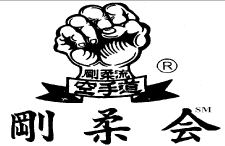|
@ @ @ @ 187 Monte Carlo Way, Danville, California 94506 U.S.A. TEL.: (925) 984-1973 @ |
|
The clenched fist design , the mark gGoju-Kaih, and ’_ο£(in kanji) as printed here on the top are legal service marks registered with the United States Patent Office by Norimi Gosei Yamaguchi. To duplicate these service marks by way of printing, embroidering and founding or to display them in public without authorization may constitute service mark infringements and may be subject to lixiviation . Please refer to h About Goju-Kai Insignia" |

